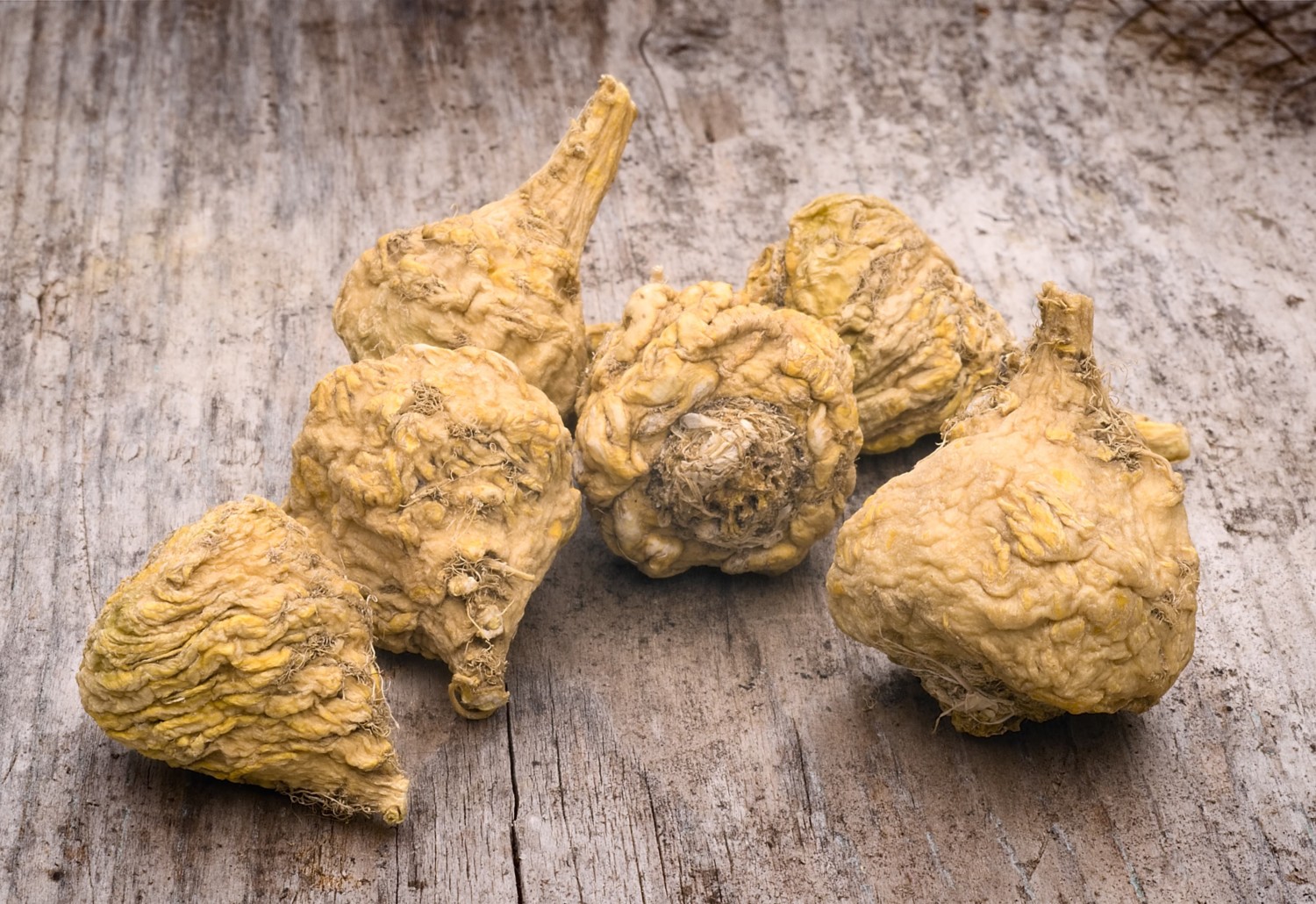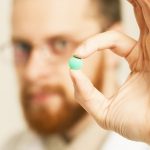Maca or Peruvian maca (botanical name Lepidium meyenii) is a ‘Ginseng plant’ that includes seven ‘perennial’ varieties, all originating in South America and more precisely of the Andean ridge. Different varieties of maca are distinguished from each other in shapes and colors, but the most ‘precious’ are the yellow or Milagro and the dark red or the Cello.
Maca or Peruvian maca
During the pollination period, maca produces five small white-colored petals of white-straw yellow. The respective fruits are minutes and dry consistency. Once (since the golden age of the Inca), it was widely cultivated by Andean people. Today it is much less and its production is limited to the Puna (Pasco) plateau and Junín, between 3500 and 4500 meters above sea level. Its production determines the characteristic ‘impoverishment of the soil’ which requires a rest from the crops of about 5 years.

In light of this, it is not difficult to believe that maca is a particularly ‘rich’ vegetable of nutritional principles useful to the body, although this does not justify any ‘special’ effect on the human body. But be careful, being a tuber, maca leaves (wider than the base and smaller to the apex) should not be consumed; instead, the small roots and hypocotyls are edible. If consumed correctly, maca can increase fertility in both woman and man.
Recommendations:
Maca roots are consumed both fresh and dehydrated. Fresh maca is boiled or roasted, while dried maca is exposed to the sun for a whole month and can then be found in water and consumed as fresh or pulverized to become an essential ingredient of sweets and / or alcohol.
Chemistry and composition of Maca
Pre-Columbian civilizations, between the 13th and 16th centuries, cultivated maca on the Peruvian plateau due to its high energy density and the intense total nutritional value of the drug (tuber and roots).
Chemistry and composition of macaMaca (depending on the variety) contains a protein portion that swings between 10 and 18g per 100g edible part (while the rest of the energy is made from glucids and lipids). The peptides contained therein are of medium biological value and are composed of discrete quantities of essential amino acids such as leucine phenylalanine, lysine, valine, isoleucine, threonine, methionine and histidine. This feature has made maca a tuber to say the least indispensable since on the Andino plateau animal foods (containing high-protein proteins) are not particularly easy to find – at the expense of overall protein quality. It is presumed that maca’s association with other foods containing its limiting amino acids has been able to complete the essential amino acid pool by balancing the food regime of established populations.
Maca is also present in energy lipids, including saturated fatty acids (40% of total lipids) and unsaturated (54% of total lipids), with the welcome presence of the essential fatty acid of the ω6 ac family. Maca is rich in linoleic acid. Also remarkable is the concentration of plant sterols, among which are especially β-sitosterol, δ-campesterol, ergosterol, brassicasterol and δ-ergostadienol. There are no alkaloids, triterpenes, flavonoids, and glycosides (some notable antioxidants).
It is also worth noting the average amount of mineral salts between which are micro and macro elements. Maca contains excellent amounts of: potassium (K – 2050mg per 100g), calcium (Ca – 150mg per 100g), ferrous or trivalent iron (Fe3 + – 16.6mg per 100g), copper (Cu – 5.9mg per 100g) Zinc (Zn – 3.8mg per 100g). Sodium (Na) and manganese (Mn) not determined. Maca’s vitamin content is not negligible, especially those of group B water-soluble.
Curiosity: maca are also typical and exclusive molecules of this tuber, macarides (benzylated derivatives of 1,2-dihydro-N-hydroxypyridine) and macamides (bensialite alcohols). Maca’s essential oil contains phenyl acetonitrile, benzaldehyde and 3-methoxyphenyl acetonitrile.
Properties of Maca
Maca has always been considered (as well as ginseng) a tuber with exceptional characteristics. In addition to the various nutritional aspects already listed, it is attributed to tonic, aphrodisiac, fertility and adaptogenic properties, but no conclusive studies that demonstrate the indiscriminate benefit action or the mechanism of action on fertility increase are yet available.
Maca is an essential ingredient of Peruvian ethno-medicine, and when it comes down to natural remedies, traditions should not be underestimated. Maca can be useful as a ‘tonic’ in sports integration and as a supplement to low calorie dieters, but the consumer does not necessarily expect miraculous results. Its effect is somewhat subjective and, if some seem irreplaceable, for others it is worth just over a glass of water.
Maca is also recommended because of its aphrodisiac potential and increased fertility observed in some Peruvian studies. The recommended dosage is about 1.5g of purified extract to be divided into 3 doses: morning, afternoon and full stomach.
Maca’s administration improves sperm production and sperm mobility. A follow-up study compared maca to a placebo and again achieved positive results desired and independent of the hormone axis. More recent studies have reported increased fertility on female rat, associated with an increase in estrogen and follicular stimulation. The same work, but on male rats, observed an increase in spermatogenesis and ejaculation, while the high dosage of maca seems to significantly reduce the intercopulation interval. Ultimately, from the in-depth studies on male rat, there is an increase in desire, sperm production and, in subjects with erectile dysfunction, a reduction in the erection period of erection. The use of maca is contraindicated in pregnancy and lactation but in healthy subjects has not shown any side effects of any kind.



